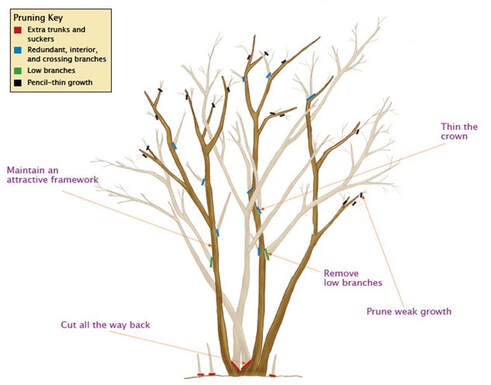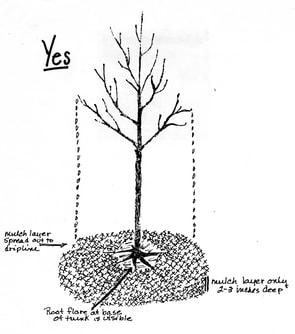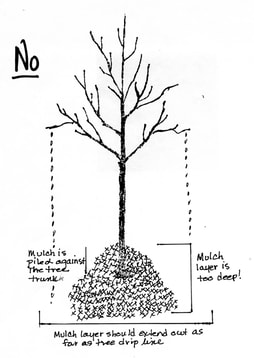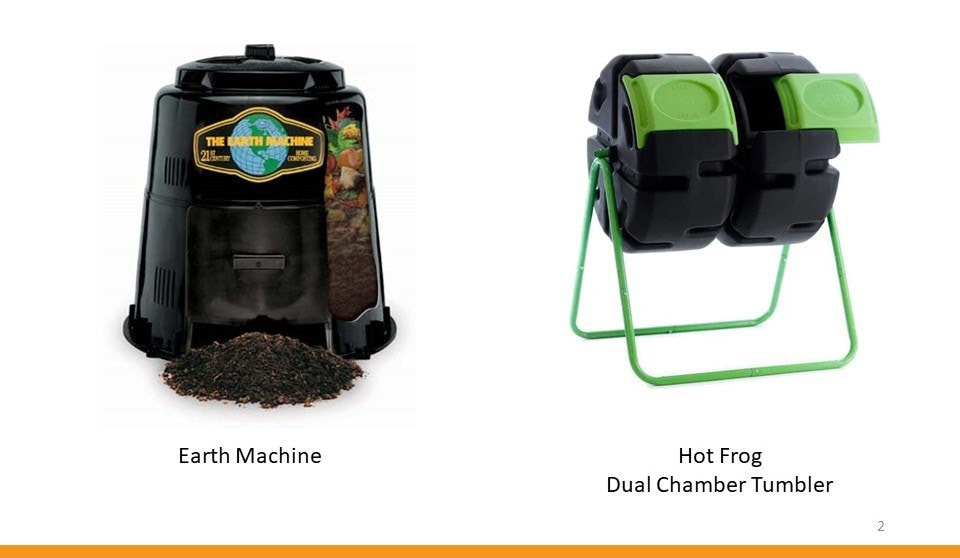Garden Club
Greater Farmland Neighborhood Garden Club
The GFCA Garden Club is not an official committee, but is an active social and activity group for gardening enthusiasts. The club has hosted monthly educational meetings on many topics, including native plantings, worm composting, and visits to member gardens. Look for Garden Club informational articles in GFCA mailed newsletters.
To join the Garden Club, email Susan Schick or call Sue at 240-498-2784.
The GFCA Garden Club is not an official committee, but is an active social and activity group for gardening enthusiasts. The club has hosted monthly educational meetings on many topics, including native plantings, worm composting, and visits to member gardens. Look for Garden Club informational articles in GFCA mailed newsletters.
To join the Garden Club, email Susan Schick or call Sue at 240-498-2784.
Tips and Ideas from the Garden Club:
A wealth of information - homegrownnationalpark.org
Get a list of native plants for our locale - nwf.org/nativeplantfinder
and extension.umd.edu/resource/recommended-native-plants-maryland/
and environment@greaterfarmland.org
and Here's a list of plants that support specific caterpillars, butterflies, and native moths
Want to identify and remove invasive plants? Here's a guide and list:
https://extension.umd.edu/resource/invasive-species/
Get a list of native plants for our locale - nwf.org/nativeplantfinder
and extension.umd.edu/resource/recommended-native-plants-maryland/
and environment@greaterfarmland.org
and Here's a list of plants that support specific caterpillars, butterflies, and native moths
Want to identify and remove invasive plants? Here's a guide and list:
https://extension.umd.edu/resource/invasive-species/
Mulch your Trees, Shrubs, & Plant Beds in Moderation
Tree Guide from Conservation Montgomery online.flippingbook.com/view/84733490/
Mulching around trees and shrubs and throughout your garden beds has many benefits, but it needs to be done correctly. Otherwise, it can cause more problems than it solves.
Why mulch?
What mulch?
How to mulch?
Tree Guide from Conservation Montgomery online.flippingbook.com/view/84733490/
Mulching around trees and shrubs and throughout your garden beds has many benefits, but it needs to be done correctly. Otherwise, it can cause more problems than it solves.
Why mulch?
- Shades plant roots on hot, sunny days.
- Prevents moisture from evaporating.
- Helps control weeds.
- Can add organic material to the soil.
What mulch?
- Organic mulch, such as shredded wood, bark, compost, grass-clippings, and shredded leaves will decompose and improve the soil. They may last a year or two, but then you’ll have to add more. They are easy to spread.
- There are many types of organic mulches, each with pros and cons. Bark nuggets can float away in a heavy rain. Cocoa hulls have a distinct aroma, are expensive, and are toxic to pets. Shredded hardwoods are inexpensive, but don’t add as many nutrients to the soil as compost, grass-clippings, and shredded leaves. Be cautious about dyed mulch, which comes in dark brown, black, and red. The actual wood may be shredded from pallets and other non-organic sources, and then the inconsistencies in the wood products are covered up by the sprayed tints. The dye contents, which are not always listed, may contain ingredients that may even be harmful to plants. Compost adds lots of nutrients to the soil, but is not good at preventing weeds. If you make your own compost, be careful that it is heated correctly so that the weed seeds have been killed. Grass-clippings can get soggy if they are spread too deeply, and should not be used at all if the grass was treated with herbicides. Dried leaves are a great mulch, but they must be shredded first. Pine needles are an excellent, long-lasting mulch, especially good around acid-loving plants like azalea and rhododendron.
- Non-organic mulch, such as stone or gravel, is meant to be permanent, and will not improve the soil. It is difficult to plant in after it has been laid down, as the stones get mixed into the soil. Unless it is placed on top of landscape fabric, weeds will find their way through.
How to mulch?
- Put mulch down any time of year.
|
There is a correct way and an incorrect way:
Correct application: Spread mulch around a trees or shrubs, so it looks like a doughnut. Once the mulch is applied, pull the mulch away from the tree trunk by 5 - 6 inches. The DEPTH of the ring should be 2 - 4 inches max. For soils that are poorly drained, like clay, only use 2 inches of mulch. The mulched area around a tree should extend to the drip line of the branches, or at least cover a 4-5 foot diameter area around the trunk. The larger the mulched area, the more beneficial. You should be able to see the tree trunk and the flare of the tree. Incorrect application: Mulch volcanoes are not healthy for trees/shrubs. Excessive mulch causes: Moisture build-up, ideal conditions for insect pests, diseases, decay, and growth of water-repelling fungi (which leaves the tree in drought conditions despite receiving water), excess heat generation (can kill the inner bark of young trees or prevent the natural hardening), the growth of secondary roots in the mulch rather than the surrounding soil (preventing water and nutrients from being absorbed by the primary root system). |
Leaves... Pick up or Leave Alone?
Removing autumn leaves robs our yards of one of nature’s greatest resources: rich, natural compost. A more eco-friendly way of managing leaf litter is to mulch-mow. Mulching the leaves that have fallen on your grass, rather than blowing them off the lawn has many advantages: It reduces noise and greenhouse gases; it enhances the health of the lawn by creating free, valuable compost that enriches the soil; it avoids spreading dust and contaminates into the air; it saves time and money.
How do you use your lawn mower to mulch-mow? Mulching kits are available to attach to your home lawn mower, but a regular mower will work, too, although you may have to make several passes. Like mowing tall, wet grass, mulch-mowing deep, wet piles of leaves can be difficult. Redistribute piles across the lawn before mowing, and always try to do it when the leaves are dry.
What about leaf litter piled underneath shrubs and on flower beds? Fallen leaves are an essential resource for ecosystems. Leaves that have fallen on flower beds provide a habitat for overwintering beneficial insects and butterflies. To encourage biodiversity in your garden, let the fallen leaves rest in your flower beds, under tree canopies, and around shrubs. This acts as a free, natural compost and mulch. You can leave it in place year-round, but if you don’t like the appearance of the leaf litter, be sure to wait for several 50 plus degree days in the spring before cleaning up the debris to allow the insects time to emerge.
To create a better, healthier, more eco-friendly and quieter garden this fall, please, leave the leaves alone!
Removing autumn leaves robs our yards of one of nature’s greatest resources: rich, natural compost. A more eco-friendly way of managing leaf litter is to mulch-mow. Mulching the leaves that have fallen on your grass, rather than blowing them off the lawn has many advantages: It reduces noise and greenhouse gases; it enhances the health of the lawn by creating free, valuable compost that enriches the soil; it avoids spreading dust and contaminates into the air; it saves time and money.
How do you use your lawn mower to mulch-mow? Mulching kits are available to attach to your home lawn mower, but a regular mower will work, too, although you may have to make several passes. Like mowing tall, wet grass, mulch-mowing deep, wet piles of leaves can be difficult. Redistribute piles across the lawn before mowing, and always try to do it when the leaves are dry.
What about leaf litter piled underneath shrubs and on flower beds? Fallen leaves are an essential resource for ecosystems. Leaves that have fallen on flower beds provide a habitat for overwintering beneficial insects and butterflies. To encourage biodiversity in your garden, let the fallen leaves rest in your flower beds, under tree canopies, and around shrubs. This acts as a free, natural compost and mulch. You can leave it in place year-round, but if you don’t like the appearance of the leaf litter, be sure to wait for several 50 plus degree days in the spring before cleaning up the debris to allow the insects time to emerge.
To create a better, healthier, more eco-friendly and quieter garden this fall, please, leave the leaves alone!

Don’t Commit Crape Murder!
Late winter/early spring is the best time to prune crape myrtle, but too often the shrub is kept unnaturally compact by shearing off the top. It is much better to choose a smaller variety to begin with, and then prune it to allow for its lovely natural habit, which is vase-like. Here’s how to prune a crape myrtle the RIGHT WAY:
Pruning Crape Myrtle
Late winter/early spring is the best time to prune crape myrtle, but too often the shrub is kept unnaturally compact by shearing off the top. It is much better to choose a smaller variety to begin with, and then prune it to allow for its lovely natural habit, which is vase-like. Here’s how to prune a crape myrtle the RIGHT WAY:
Pruning Crape Myrtle
- Crape Myrtles bloom on new growth, so prune in late winter or early spring before they break dormancy. Winter pruning allows visibility of the structure without distraction from leaves.
- The habit of crape myrtles is to produce multiple trunks, which can cause crowding as the plant matures. Choose three, five, or, at most, seven, main trunks. An odd number is more pleasing than an even number. Choose trunks that are growing straight and are not crowding each other.
- Prune suckers and any trunk you have not selected as close to the soil line as possible.
- Remove unwanted low branches all the way back to the main trunk
- Thin out the crown by removing any that are growing into an area already occupied by another branch. Make your cuts slightly above a bud that faces in the direction in which you want your new branch to grow.
- Remove any limbs that cross back through the plant or rub against each other.
- Remove excess branches in the interior of the plant to allow for better air circulation, which will help reduce diseases like powdery mildew.
- Prune any weak branches or stems that are smaller than a pencil in diameter. Removing weak wood allows the plant to focus new growth on branches that will be able to support the flowers.
- Topping, shearing, or pollarding (Crape Murder!) results in weak branches, with fewer blooms. The knobs or knuckles that form at the end of a topped branch produce spindly stems that are so long and weak that they can’t support the weight of the flowers.
Attracting Butterflies with Native Milkweed and Other Native Plants
by Marjorie Raley
1. Butterfly weed is beautiful, deer and rabbit resistant, and fairly tolerant of drought. Put it where it gets at least 4-5 hours of sun, and before you plant it, add some sand to your clay soil to prevent root rot if it rains a lot. You can put leaves over it as a mulch in winter, but clear them off in the spring so the shoots can get through. Mine come up fairly late--I start to see the plants peeking up in late May to early June.
2. Common milkweed. I was thrilled with how this plant produced caterpillars! My one or two yearly Monarchs would leave behind several chrysalis and lots of caterpillars. But here's a cautionary note: this species spreads very aggressively once established. Locate it where you don't mind it taking over, and not close to a neighbor's yard, unless they want it, too.
3. Swamp or Rose milkweed. This milkweed is very well-behaved. It spreads slowly by seed. I find it needs at least 4-5 hours of sun, and soil that stays a bit moist. Put it in dry soil and you will find it comes and goes too quickly to provide food for the Monarchs.
4. Purple milkweed. Very slow to establish and not aggressive. Mine is about three years old now and is getting to be very nice-looking.
As for flowering plants that attract butterflies, here's the usual advice:
1. Native plants have been shown by research to attract bees and butterflies better than most non-natives. Caveat: Some popular natives have been "engineered" into varieties claiming to have longer bloom-time, better pest resistance, etc. Often, these varieties have less nectar and pollen, can be treated with pesticides, and can even have changes to bloom time-frame or flower structure that can deter butterflies and specialist bees. Be careful where you buy your plants.
2. Try to have plants that flower at different times so that your butterflies have a continuous source of food.
3. Look into going beyond just providing nectar. Provide plants that butterflies lay eggs on and that feed the caterpillars. I will send another post in a few days with suggestions. You might even be surprised to see that you already have some of these plants.
4. Don't spray pesticides on plants you want the butterflies to visit!
by Marjorie Raley
1. Butterfly weed is beautiful, deer and rabbit resistant, and fairly tolerant of drought. Put it where it gets at least 4-5 hours of sun, and before you plant it, add some sand to your clay soil to prevent root rot if it rains a lot. You can put leaves over it as a mulch in winter, but clear them off in the spring so the shoots can get through. Mine come up fairly late--I start to see the plants peeking up in late May to early June.
2. Common milkweed. I was thrilled with how this plant produced caterpillars! My one or two yearly Monarchs would leave behind several chrysalis and lots of caterpillars. But here's a cautionary note: this species spreads very aggressively once established. Locate it where you don't mind it taking over, and not close to a neighbor's yard, unless they want it, too.
3. Swamp or Rose milkweed. This milkweed is very well-behaved. It spreads slowly by seed. I find it needs at least 4-5 hours of sun, and soil that stays a bit moist. Put it in dry soil and you will find it comes and goes too quickly to provide food for the Monarchs.
4. Purple milkweed. Very slow to establish and not aggressive. Mine is about three years old now and is getting to be very nice-looking.
As for flowering plants that attract butterflies, here's the usual advice:
1. Native plants have been shown by research to attract bees and butterflies better than most non-natives. Caveat: Some popular natives have been "engineered" into varieties claiming to have longer bloom-time, better pest resistance, etc. Often, these varieties have less nectar and pollen, can be treated with pesticides, and can even have changes to bloom time-frame or flower structure that can deter butterflies and specialist bees. Be careful where you buy your plants.
2. Try to have plants that flower at different times so that your butterflies have a continuous source of food.
3. Look into going beyond just providing nectar. Provide plants that butterflies lay eggs on and that feed the caterpillars. I will send another post in a few days with suggestions. You might even be surprised to see that you already have some of these plants.
4. Don't spray pesticides on plants you want the butterflies to visit!
Composting Food Waste
|
Montgomery County promotes home composting of food waste, https://www.montgomerycountymd.gov/SWS/foodwaste/index.html
You can bring your food scraps to MOM's Organic Market at the corner of Randolph Road and Nebel Street, which has a bin on the sidewalk to the right of their entrance doors. |
You can buy a covered countertop bin online, at The Container Store, or other retailers, then take your food scraps to your off-the-ground outdoor composting bin or to one of the collection sites, MOM's Organic Market or Pike Central Market.
|
Alternatively, you can hire a private composting company to collect your food scraps, for a monthly fee. They will deliver compost for your garden from the results. Compost Crew collects weekly in our neighborhood and offers a discount for us.
Dedicated Food Scraps Recycling Collectors
Compost Crew, 301-202-4450
Apex Organix, 703-403-9095
Compost Cab, 202-695-2020
EnviRelation, 202-465-4802
Organic Agriculture Recycling, LLC, christopher_br@hotmail.com, 240-898-7284
Organic Waste Haulers, 301-755-9286
Dedicated Food Scraps Recycling Collectors
Compost Crew, 301-202-4450
Apex Organix, 703-403-9095
Compost Cab, 202-695-2020
EnviRelation, 202-465-4802
Organic Agriculture Recycling, LLC, christopher_br@hotmail.com, 240-898-7284
Organic Waste Haulers, 301-755-9286
|
Montgomery County Requires a Specific Bin Type for Backyard Food Waste Composting
Adding food scraps in an open compost pile, or in a compost bin with no lid, is problematic because this may attract rodents and other pests. The compost bins currently provided by the County are designed for composting yard trim, because they are completely open on the top and the bottom and have aerating holes all around the sides. Please keep food scraps out of these bins. During FY22, the county is evaluating and testing a variety of compost bins that successfully deter rodents and demonstrate their effectiveness and use. Download educational materials about backyard composting of food scraps. |



